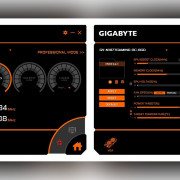Aom drum kit vol.2 (2021) скачать торрент
Содержание:
Testing the AV1 codec
Testing basics
Currently there are two types of tests in the AV1 codec repository:
- Unit tests.
- Example tests.
The unit tests can be run at build time:
The example tests require a bash shell and can be run in the following manner:
IDE hosted tests
By default the generated projects files created by CMake will not include the
runtests and testdata rules when generating for IDEs like Microsoft Visual
Studio and Xcode. This is done to avoid intolerably long build cycles in the
IDEs— IDE behavior is to build all targets when selecting the build project
options in MSVS and Xcode. To enable the test rules in IDEs the
variable must be enabled at CMake generation time:
Downloading the test data
The fastest and easiest way to obtain the test data is to use CMake to generate
a build using the Unix Makefiles generator, and then to build only the testdata
rule:
The above make command will only download and verify the test data.
Development[]
Ensemble Studios began work on their first fully 3D engine in parallel to their development of the first Age of Empires. Christened the BANG! Engine, this was announced in January 2001 (And hinted at in 2000) for use in a new game, codenamed RTSIII. RTSIII would eventually become Age of Mythology.
In developing Age of Mythology, Ensemble Studios decided to move away from the heart of the Age of Empires Series; history, to avoid becoming stale and repetitive. This allowed them to work with new ideas.
For the June 2001 Issue, in preparing for E3 2001, Computer Gaming World released Magazine #203 featuring Thor on the front cover, the Age of Mythology Article had a whole 4-5 pages worth of information that can be read here. This article is the first piece of publically revealed Age of Mythology Information. However if one was lucky enough to gain the «Making of Age of Empires II» video, once can see the modelling of a now cut Norse Heavy Cavalry, called simply enough the Heavy Cavalry, making it the first true piece of revealed AoM content, back from sometime in 2000.
Age of Mythology has the most amount of beta/alpha content in the series (Despite a majority of it being inaccessible), hundreds of pre-release screenshots, and several videos exist showing some units such as the Apep, Griffon and the Norse Hirdman. According to Bruce Shelley they released numerous pictures (every week) videos, and other pre-release material because they saw it as «nurturing the community» and to develop hype.
The Story was at least changed several times, the most notable massive change being the switch of main characters, such as Misenus being replaced with Arkantos, other characters such as Mnevis, Achilles, and another unknown Cyclops Antagonist, Siegfried and another bandit called Shaba Ka (being merged with Kemsyt) The campaign structure changed at least 3 times, originally having some 40 scenarios, not including the cut Arena sub-campaign and the tutorials before being changed to 36 and finally 32. It is possible that the campaign was originally intended as an Anthology-based campaign much like The Age of Kings, or the later DS Age of Empires: Mythologies.
Following the announcement of the game for September 2002, a trial version was released to the public. This contained a shortened version of the game’s campaign (5 scenarios) and two random maps. In the trial version, the player could select any of the nine Gods available in the full version of the game.
Age of Mythology underwent a large amount of play-testing during its developmental phase, as Ensemble Studios attempted to create a more balanced and competitive game than its predecessors. Greg T. Street commented that one of the reasons Age of Mythology is so popular is because the development team spent many hours working on the game through active testing, rather than just taking advice from a «faceless drone in another building.»
In July 2002 it was announced that a Multiplayer Alpha would be released, this was given to a random, and chosen 10,000 players, and lasted for a month before closure.
The sounds of Age of Mytholgy were designed in the way of using custom, recorded sounds (instead of pre-recorded archive sounds or the use of synths), such as beating meat with real weapons and sledgehammers to be used as hack sounds, or recording penguins in SeaWorld Texas that was slowed down with other sound effects added to be used as the well known eerie souls in Erebus.
There was much debate during Age of Mythology’s development concerning the unbalanced nature of God powers, and how to make them “fair”, while still maintaining their element of fun. It was concluded that the best way to make it fair for everyone was to limit the use of god powers to one a game, compared to the original Hero that casted Godpowers system.
On September 30, 2003, Ensemble Studios released an expansion to Age of Mythology, entitled Age of Mythology: The Titans. It contained a new culture, the Atlanteans, as well as new units and a new mythological race, the titans. The expansion was received well by critics and fans alike, though its rating was not as high as that of the original.
Heroes[]
Unlike the Norse and Greeks, the Egyptian hero is not simply a regular unit with an attack bonus against myth units. Instead the Egyptians have the Pharaoh, a hero that heals and is devastating against myth units, and Priests, which are essentially lesser versions of the Pharaoh. The Egyptian player starts with a Pharaoh and a Priest. Priests are fairly expensive and rather weak against human soldiers.
Pharaoh
- Main article: Pharaoh (Age of Mythology)
The Pharaoh is a fairly tough warrior, but is still no match for grouped human units. However, he is a powerful support unit due to his strong attacks against enemy Myth units and his ability to heal. Set’s Pharaoh can also summon animals.
If killed, the Pharaoh regenerates at the player’s starting Town Center after one and a half minutes, so he is never out of action for long.
Priest
- Main article: Priest (Age of Mythology)
Like the Pharaoh, the Priest has a ranged attack with a large attack bonus against mythological units, but is very weak against regular units. It can also heal units. The Priest has the additional ability to summon Obelisks, which are cheap and quickly placed structures that provide a large line of sight. Priests can be trained at the Town Center (once a Temple has been built) or at the Temple. All three major gods have a bonus to their priests — Ra’s can empower buildings like the Pharaoh, Isis’ place obelisks faster and at lower cost, and Set’s can convert wild animals to serve the player.
Разработка
Ensemble Studios начала работу над своим первым полностью трехмерным движком одновременно с разработкой Age of Empires II: The Age of Kings . Названный BANG! Движок, о котором было объявлено в январе 2001 года, для использования в новой игре под кодовым названием RTSIII . RTSIII в конечном итоге была названа Age of Mythology . Разрабатывая Age of Mythology , Ensemble Studios решила отойти от центра истории серии Age of Empires , чтобы не стать устаревшим и однообразным. Это позволило им работать с новыми идеями и концепциями.
После анонса игры в сентябре 2002 года была выпущена пробная версия . Он содержал пять сценариев игровой кампании и две случайные карты. В пробной версии игрок может выбрать только Зевса, но в полной версии игры доступно девять богов. Был дебаты во время Возраст Мифология ‘ ы строительства относительно несимметричный характер бога полномочий и как сделать их „справедливой“, сохраняя при этом элемент веселья в них. Был сделан вывод, что лучший способ сделать его справедливым для всех — это ограничить использование божественных сил одной игрой. Age of Mythology прошла большое количество бета-тестирования на этапе разработки, поскольку Ensemble Studios пыталась создать более сбалансированную и конкурентоспособную игру, чем ее предшественники. Грег Т. Стрит прокомментировал, что одна из причин, по которой Age of Mythology стала такой популярной, заключалась в том, что команда разработчиков потратила много часов на работу над игрой посредством активного тестирования, а не просто следуя советам «безликого дрона в другом здании».
Музыка
Официальный саундтрек был выпущен 22 октября 2002 года на лейбле Sumthing Else. Партитуру написали Стивен Риппи и Кевин Макмаллан. Риппи цитирует таких музыкантов, как Питер Гэбриэл , Туатара , Билл Ласвелл , Талвин Сингх и Чад Блейк, как вдохновители для саундтрека. Музыкальная работа над Age of Mythology не была похожа ни на что, что делал Риппи раньше; Примером этого было «сочинение для оркестра из семидесяти человек, а затем вылет в Вашингтон, чтобы его записать».
Музыка 4 Игр рецензента, Джей Semerad, горка Возраста Мифология ‘ саундтрека s с похвалой. Он резюмировал свой обзор, заявив: «В целом, саундтрек к Age of Mythology — это опыт, который нельзя пропустить. Это, пожалуй, один из моих любимых саундтреков за последний год». Семерад был также удивлен и высоко оценен использованием таких инструментов, как ней-флейта , табла и игрушечное пианино , все из которых, по его словам, производили «некоторые инновационные аналоговые и синтезированные электронные эффекты». Его единственная критика заключалась в том, что временами некоторые фоновые мелодии были «привязаны к простой гармонизации» и лишены какой-либо «настоящей смелой или новаторской цели».
Testing the AV1 codec
Testing basics
There are several methods of testing the AV1 codec. All of these methods require
the presence of the AV1 source code and a working build of the AV1 library and
applications.
3. Encoder tests:
When making a change to the encoder run encoder tests to confirm that your
change has a positive or negligible impact on encode quality. When running these
tests the build configuration should be changed to enable internal encoder
statistics:
The repository contains scripts intended to make running these tests as simple
as possible. The following example demonstrates creating a set of baseline clips
for comparison to results produced after making your change to libaom:
After making your change and creating the baseline clips, you’ll need to run
encodes that include your change(s) to confirm that things are working as
intended:
After creating both data sets you can use to generate a
report that can be viewed in a web browser:
You can view the report by opening mytweak.html in a web browser.
IDE hosted tests
By default the generated projects files created by CMake will not include the
runtests and testdata rules when generating for IDEs like Microsoft Visual
Studio and Xcode. This is done to avoid intolerably long build cycles in the
IDEs— IDE behavior is to build all targets when selecting the build project
options in MSVS and Xcode. To enable the test rules in IDEs the
variable must be enabled at CMake generation time:
Downloading the test data
The fastest and easiest way to obtain the test data is to use CMake to generate
a build using the Unix Makefiles generator, and then to build only the testdata
rule:
The above make command will only download and verify the test data.
Adding a new test data file
First, add the new test data file to the bucket of the
project on Google Cloud Platform. You may need to ask someone
with the necessary access permissions to do this for you.
This command grants the group READ access to the file named
«test-data-file-name» in the bucket.
Once the new test data file has been added to , create a CL to
add the name of the new test data file to and add
the SHA1 checksum of the new test data file to . (The SHA1
checksum of a file can be calculated by running the command on the
file.)
Sharded testing
The AV1 codec library unit tests are built upon gtest which supports sharding of
test jobs. Sharded test runs can be achieved in a couple of ways.
1. Running test_libaom directly:
To create a test shard for each CPU core available on the current system set
to the number of CPU cores on your system minus one.
2. Running the tests via the CMake build:
The maximum number of test targets that can run concurrently is determined by
the number of CPUs on the system where the build is configured as detected by
CMake. A system with 24 cores can run 24 test shards using a value of 24 with
the parameter. When CMake is unable to detect the number of cores 10 shards
is the default maximum value.
Building the library and applications
Basic build
CMake replaces the configure step typical of many projects. Running CMake will
produce configuration and build files for the currently selected CMake
generator. For most systems the default generator is Unix Makefiles. The basic
form of a makefile build is the following:
The above will generate a makefile build that produces the AV1 library and
applications for the current host system after the make step completes
successfully. The compiler chosen varies by host platform, but a general rule
applies: On systems where cc and c++ are present in $PATH at the time CMake is
run the generated build will use cc and c++ by default.
Configuration options
The AV1 codec library has a great many configuration options. These come in two
varieties:
- Build system configuration options. These have the form .
- AV1 codec configuration options. These have the form .
Both types of options are set at the time CMake is run. The following example
enables ccache and disables high bit depth:
The available configuration options are too numerous to list here. Build system
configuration options can be found at the top of the CMakeLists.txt file found
in the root of the AV1 repository, and AV1 codec configuration options can
currently be found in the file .
Dylib builds
A dylib (shared object) build of the AV1 codec library can be enabled via the
CMake built in variable BUILD_SHARED_LIBS:
This is currently only supported on non-Windows targets.
Cross compiling
For the purposes of building the AV1 codec and applications and relative to the
scope of this guide, all builds for architectures differing from the native host
architecture will be considered cross compiles. The AV1 CMake build handles
cross compiling via the use of toolchain files included in the AV1 repository.
The toolchain files available at the time of this writing are:
- arm64-ios.cmake
- arm64-linux-gcc.cmake
- armv7-ios.cmake
- armv7-linux-gcc.cmake
- armv7s-ios.cmake
- mips32-linux-gcc.cmake
- mips64-linux-gcc.cmake
- x86-ios-simulator.cmake
- x86-linux.cmake
- x86-macos.cmake
- x86_64-ios-simulator.cmake
The following example demonstrates use of the x86-macos.cmake toolchain file on
a x86_64 MacOS host:
To build for an unlisted target creation of a new toolchain file is the best
solution. The existing toolchain files can be used a starting point for a new
toolchain file since each one exposes the basic requirements for toolchain files
as used in the AV1 codec build.
As a temporary work around an unoptimized AV1 configuration that builds only C
and C++ sources can be produced using the following commands:
In addition to the above it’s important to note that the toolchain files
suffixed with gcc behave differently than the others. These toolchain files
attempt to obey the $CROSS environment variable.
Microsoft Visual Studio builds
Building the AV1 codec library in Microsoft Visual Studio is supported. The
following example demonstrates generating projects and a solution for the
Microsoft IDE:
Xcode builds
Building the AV1 codec library in Xcode is supported. The following example
demonstrates generating an Xcode project:
Soundtrack[]
A soundtrack to Age of Mythology was released on October 22, 2002, under the record label «Sumthing Else». Music director Steven Rippy said the game’s score, and soundtrack, were based on musicians including Peter Gabriel, Tuatara, and Bill Laswell, as well as the video game Grim Fandango. He also said that the musical work done on Age of Mythology was unlike anything he had done before. An example of this was «writing for a seventy-piece orchestra and then flying out to Washington to record it.» Sound artist Kevin McMullan agreed, stating that «working with a live orchestra and creating a dynamic music system have been the most unique aspects of this project.»
According to the Making of Age of Mythology, unlike previous Age of Empires games, Age of Mythology used real life instruments from the Ancient Greek, Egyptian, and Scandinavian eras, for a «Natural» feeling, some non-Antiquity instruments were used such as a Toy Piano (for the credits song for example) along with Indian Tablas and Persian Ney Flutes were used as well, despite being from areas the game did not cover.
In their review of the soundtrack, Avalanche Online stated that «Age of Mythology has an acustic [sic] sound that brings you back to the Earth’s roots.» The only criticism in the review was for the 16th track; «Gary’s Reserve,» with the reviewer writing «Whatever possessed them to place a jazzy dance track on the end of the wondrous non electric musical heaven and make it feel so out of place is beyond me.» Regardless of this, the soundtrack was still rated 10 out of 10, and its review concluded with the statement «I really cannot enthuse over this soundtrack enough.»
Track listing
The tracks appearing on the soundtrack are as follows:
- Cat Named Mittens, A (Main Title)
- Eat Your Potatoes
- Chocolate Outline
- Never Mind The Slacks And Bashers
- Suture Self
- Flavor Cats (In The Comfort Zone)
- Slaysenflite, (Fine Layers Of)
- Hoping For Real Betterness
- Adult Swim
- Ballad Of Ace LeBaron, The
- In A Pile Of Its Own Good
- Behold The Great Science Fi
- Have You Met Her Thunder (Trailer Soundtrack)
- If You Can Use A Doorknob (Victory Theme)
- Ma’am…Some Other Sunset (Defeat Theme)
- Gary’s Reserve (End Credits)
- Eat Your Potatoes – (quiet mix)
Coding style
We are using the Google C Coding Style defined by the Google C++ Style Guide.
The coding style used by this project is enforced with clang-format using the configuration contained in the .clang-format file in the root of the repository.
You can download clang-format using your system’s package manager, or directly from llvm.org. You can also view the documentation on llvm.org. Output from clang-format varies by clang-format version, for best results your version should match the one used on Jenkins. You can find the clang-format version by reading the comment in the file linked above.
Before pushing changes for review you can format your code with:
# Apply clang-format to modified .c, .h and .cc files
$ clang-format -i --style=file \
$(git diff --name-only --diff-filter=ACMR '*.' '*.cc')
Check the .clang-format file for the version used to generate it if there is any difference between your local formatting and the review system.
Some Git installations have clang-format integration. Here are some examples:
# Apply clang-format to all staged changes:
$ git clang-format
# Clang format all staged and unstaged changes:
$ git clang-format -f
# Clang format all staged and unstaged changes interactively:
$ git clang-format -f -p
References[]
- of Mythology — Gamespot
- Age of Mythology — Eurogamer.net
- ↑ «Age of Mythology» Goes Platinum With More Than 1 Million Units Sold
- ↑ Age of Mythology: The Titans — MobyGames
- ↑ Age of Mythology: The Titans — Wikipedia
- Age of Mythology Review — GamersHell.com
- Age of Mythology Heaven Hersir info
- ↑ Age of Mythology Heaven Buildings Guide
- Age of Mythology Heaven Unit Guide
- ↑ Gamespot review on Age of Mythology
- Greek Hero Units
- Relics page on Age of Mythology Heaven
- Ensemble Studios Online (ESO) FAQ
- Age of Mythology on MacSoft Games
- Elevation in Scenario Editor
- Scenario Editor Glossary
- Age of Mythology review — Eurogamer
- Age of Mythology overview
- ↑ IGN Review
- Ensemble Studios Interview
- Interview: Rock of Ages
- Age of Mythology announced
- ↑ Age of Mythology Trial
- Age of Mythology: Volume III
- Age of Mythology: Volume II
- Age of Mythology Soundtrack CD
- ↑ Age of Music
- ↑ Age of Mythology Soundtrack Review
- Microsoft Corporation Age of Mythology — Soundtrack. Published 2002. Retrieved July 28, 2007
- Age of Mythology — PC (Website no longer available)
- ↑ Age of Mythology
- ↑ Age of Mythology Reviews
- Video Game Software Sales Estimates
- ↑ Age of Mythology Review Summary
- ↑ Template:Cite web
- Age of Mythology Reviews Page
Submitting patches
We manage the submission of patches using the Gerrit code review tool. This tool implements a workflow on top of the Git version control system to ensure that all changes get peer reviewed and tested prior to their distribution.
Browse to AOMedia Git index and login with your account (Gmail credentials, for example). Next, follow the Password link at the top of the page. You’ll be given instructions for creating a cookie to use with our Git repos.
Contributor agreement
You will be required to execute a contributor agreement to ensure that the AOMedia Project has the right to distribute your changes.
Testing your code
The testing basics are covered in the above.
In addition to the local tests, many more (e.g. asan, tsan, valgrind) will run through Jenkins instances upon upload to gerrit.
Commit message hook
Gerrit requires that each submission include a unique Change-Id. You can assign one manually using git commit —amend, but it’s easier to automate it with the commit-msg hook provided by Gerrit.
Copy commit-msg to the directory of your local repo. Here’s an example:
$ curl -Lo aom/.git/hooks/commit-msg https://chromium-review.googlesource.com/tools/hooks/commit-msg
# Next, ensure that the downloaded commit-msg script is executable:
$ chmod u+x aom/.git/hooks/commit-msg
See the Gerrit documentation for more information.
Upload your change
The command line to upload your patch looks like this:
$ git push https://aomedia-review.googlesource.com/aom HEAD:refs/for/master
Incorporating reviewer comments
If you previously uploaded a change to Gerrit and the Approver has asked for changes, follow these steps:
- Edit the files to make the changes the reviewer has requested.
- Recommit your edits using the —amend flag, for example:
$ git commit -a --amend
- Use the same git push command as above to upload to Gerrit again for another review cycle.
In general, you should not rebase your changes when doing updates in response to review. Doing so can make it harder to follow the evolution of your change in the diff view.
Submitting your change
Once your change has been Approved and Verified, you can “submit” it through the Gerrit UI. This will usually automatically rebase your change onto the branch specified.
Sometimes this can’t be done automatically. If you run into this problem, you must rebase your changes manually:
$ git fetch
$ git rebase origin/branchname
If there are any conflicts, resolve them as you normally would with Git. When you’re done, reupload your change.
Низкий FPS, Age of Mythology: Extended Edition тормозит, фризит или лагает
-
Запустите диспетчер задач и в процессах найдите строку с названием игры
(Age of Mythology: Extended Edition). Кликайте ПКМ по ней и в меню выбирайте
«Приоритеты»
, после
чего установите значение
«Высокое»
. Теперь остаётся лишь перезапустить
игру. -
Уберите всё лишнее из автозагрузки. Для этого все в том же диспетчере задач нужно
перейти во вкладку
«Автозагрузка»
, где нужно отключить лишние процессы при
запуске системы. Незнакомые приложения лучше не трогать, если не знаете, за что они
отвечают, иначе рискуете испортить запуск системы. -
А также рекомендуем в настройках, связанных с энергопотреблением, установить
«Максимальную производительность»
. То же касается и видеокарты: нужно
установить максимальную производительность в настройках графического процессора (это
можно сделать в
«Управлении параметрами 3D»
), а в фильтрации текстур
выбирайте параметр
«Качество».
-
Если ваша видеокарта от Nvidia по возрасту не старше серии графических процессоров
GTX 10, тогда частоту кадров вполне реально поднять за счёт ускорения работы с
видеокартой. Для реализации задуманного опять-таки нужно открыть
«Панель
управления»
Видеокарты, перейти
в уже знакомую вкладку
«Управление параметрами 3D»
и выбрать в списке с
программами игру, после чего отыскать
«Вертикальный синхроимпульс»
и кликнуть
по нему, чтобы в меню выставить параметр
«Быстро»
. -
Следует удалить временные папки, ненужные файлы и кэш. На просторах интернета можно
найти кучу самых разных программ, которые помогают это сделать. Мы рекомендуем
воспользоваться для этого программойBleachBit
или
CCleaner
.
-
Проведите дефрагментацию или оптимизацию жёсткого диска. Для этого перейти в
«Свойства жёсткого диска»вкладка
«Сервис»«Дефрагментация» или
«Оптимизация»
. Кроме того, там же можно провести проверку/очистку диска, что
в некоторых случаях помогает. -
В конце концов, перейдите на простое оформление, чтобы компьютер не нагружался
ресурсоёмкими эффектами. К примеру, можно смело отключать встроенные отладчики,
индексирование поиска и многое другое.
Лучшие видеокарты для комфортной игры в 1080p
Пусть 4K доминирует в заголовках и привлекает многих техноблоггеров, сейчас большинство игроков
предпочитает Full HD и будет это делать еще несколько…







